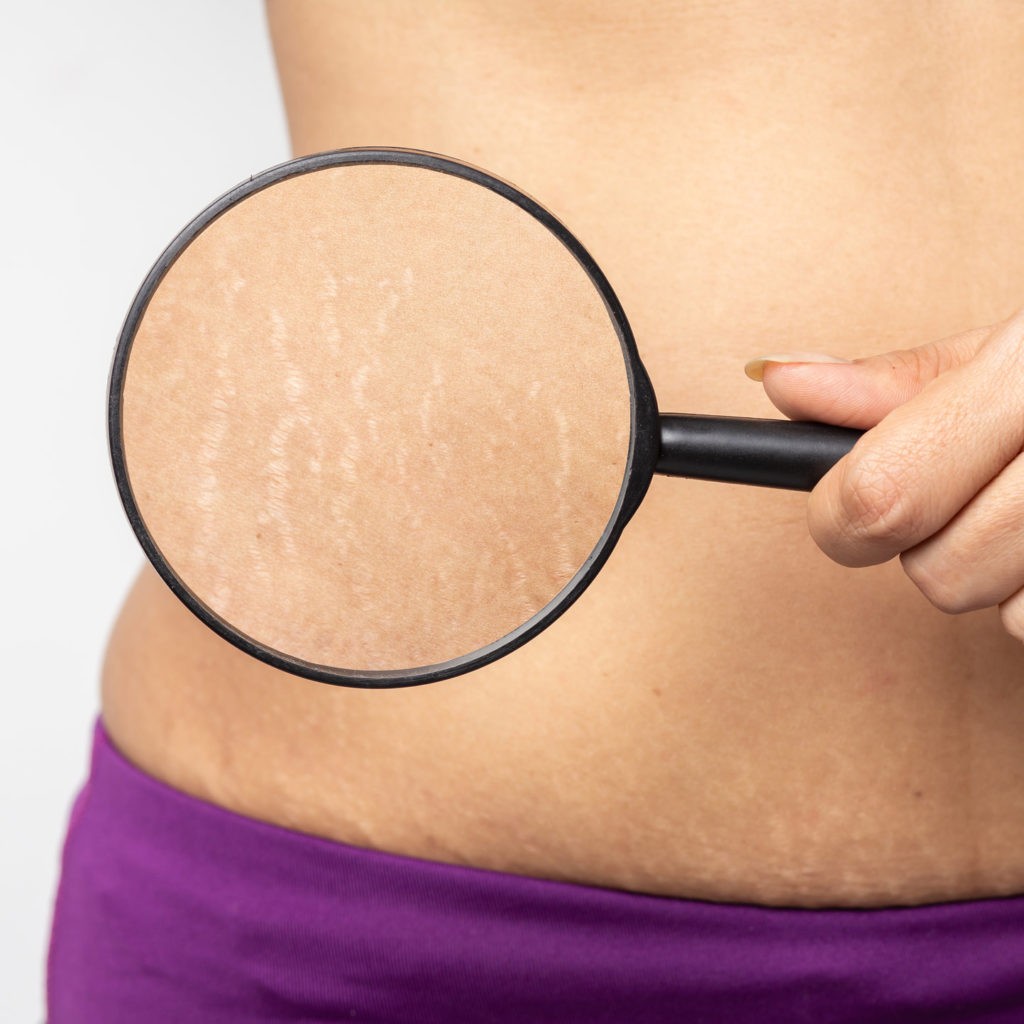Stretch marks are thin lines that appear on the surface of the skin as a form of skin scarring and fibrosis due to the tightening of the skin over its capacity and its rapid expansion. They occur in a high proportion in adults of both sexes, but are is more common in women.
There are several reasons for stretch marks, the most important of which are:
- Reaching the age of puberty, which is accompanied by specific bodily changes and an increase in the size and shape of the skin.
- Childbirth, especially if the child delivered is overweight, or if the woman is having twins, which increases the pressure on the skin, causing it to extend out leading to cracks.
- A sudden growth of the body.
- Rapid weight gain.
- Increased and enlarged body shape as a side effect of taking therpeatic cortisone.
Usually, stretch marks occur from the age of five to the age of fifty. They are usually more prominent in people with “Caucasian” white skin, occurring in women usually more than men. It often begins at puberty by a percentage of 25-30%,whereas the percentage rises to reach 77% in pregnant women. The main etiology behind the occurrence of stretch marks is not exactly known, but it is known that the connective tissues of the skin are cut off, leading to atrophy in the skin tissue called the dermal atrophy. There are other seconday factors such as pressure and bruising on the skin, eating cortisone-containing foods as well as genetic susceptibility. As for the shape of the stretch marks, they are also described as the “notch or slit” that consists of a specific longitudinal shape accompanied by atrophy.
Initially, the stretch marks appear red or lilac in color, causing itching as well as a frustrating experience for the patient due to cosmetic reasons. Over time, the red color disappears, and the stretch marks appear faded and atrophied which may mimic wrinkles. 90% of these stretch persist and only about 10% of them can go away without treatment over time. For girls, stretch marks usually appear in areas such as the breasts, thighs, and hips as they tend to enlarge with the aforementioned circumstances. While in young people, it is formed in the areas of the shoulders, lower back, and thighs. They may appear less often in the abdomen, arms, neck, and armpits. As for pregnant women, they appear mostly on the abdomen in the last six weeks of pregnancy, and to a lesser extent on the breasts and thighs as well.
Treatment:
There are no health complications that come from stretch marks, but they cause anxiety and irritation to the patient due to their appearance. Although they shrink and diminish with time, the use of creams and ointments may be useful in treating them, especially when they are red in the early phases. In that case, treatments such as “vitamin A” and “glycolic acid” compounds can be used to improve the appearance of stretch marks. A more reliable and scientifically studied treatment for stretch marks at this stet the area. The only type of laser useful for such cases is called “Pulsed-dye laser 585nm”, also known as yellow laser. There are also many other types of lasers that contribute to the treatment of these signs, such as a fractional laser, which greatly improves the appearance of the skin, and gives it a firm and healthy appearance.

